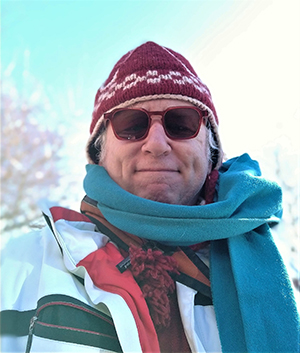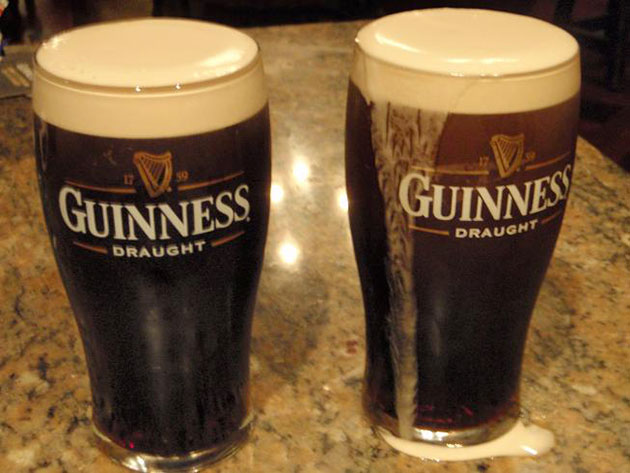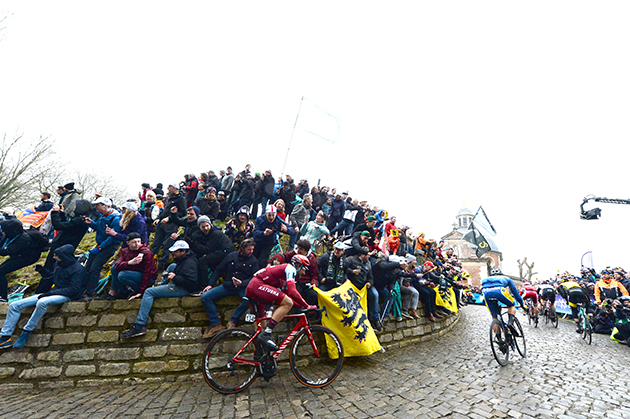

David L. Stanley
A Pint of Guinness & Paris-Roubaix,
Classics Both
Classics Both
David Stanley is an experienced cycling writer. His work has appeared in Velo, Velo-news.com, Road, Peloton, and the late, lamented Bicycle Guide (my favorite all-time cycling magazine). Here's his Facebook page. He is also a highly regarded voice artist with many audiobooks to his credit, including McGann Publishing's The Story of the Tour de France and Cycling Heroes.

David L Stanley

David L. Stanley's masterful telling of his bout with skin cancer Melanoma: It Started with a Freckle is available in print, Kindle eBook and audiobook versions, just click on the Amazon link on the right.
[Editor's note: This piece won the Peloton-Giordana Writing Award in 2013. Mr. Stanley's essay remains as true today as it did a decade ago]
David L. Stanley writes:
Anywhere in the world, go into a pub and order a pint of Guinness. You will receive a glass, 6 inches tall and 3 ½ inches across, filled with creamy, black, chocolate-y, coffee-d, bitter, foamy genius. Well-poured, the pint will be topped with an inch or so of foam, the color of a well-tanned goddess. Had you entered a public house 250 years ago, you would have received exactly the same pour. Good Lord willing, in 250 years, you’ll receive exactly the same thing.
Guinness is a Classic. The venue may change: the USA, Europe, Australia, Asia. The languages heard in the pub may change. The sports about which we argue may change, but the Guinness? That will not.

The names of cycling’s Classics, the century-old Monuments of our sport, have a serene grace: The Tour of Flanders is La Ronde, Paris-Roubaix is the Hell of the North, Milan-San Remo is La Classicissima, La Doyenne is Liege-Bastogne-Liege, Giro della Lombardia is the Race of the Falling Leaves – the spirit of the Monuments will not change. One hundred years ago, men tested their strength and courage against the same obstacles that in 2013 will again test their spirit.
I began racing bicycles in 1979. In 1984, I saw my first classic, Paris-Roubaix, courtesy of CBS, John Tesh and the thumping music from his amped-up Synclavier. The pavé bleu, the Forest of Arenberg, the crashes and remounts and crashes and remounts again, the battered bikes on the roof, the bloody and battered souls in the broom wagon – if I was transported to 1931, the year of my father’s birth, I would have seen the same scenes as I watched the Belgian Gaston Rebry ride to victory.

Gaston Rebry, tire carried on his back, racing in another time, yet performing the unchanging ritual of suffering on the road for endless hours.
The styles would have been different: slack steel frame angles, spare tires carried figure 8 style over the back, moustache-style handlebars mounted with a corked tight metal water bottle, racers clad in wool shorts hiked high on the thigh and a collared wool jersey sporting pockets in the front.
But the race? The race stays the same. The pain, the expectation of pain stays the same. The pounding of the cobbles, the blood and bruising of the crashes, the relentless ferocity of the climbs, the cold winds and rain and snow, the fitness and valor, the willingness to suffer for eight hours in search of the victory—in the Classics, that never changes.
Two hundred kilometers into Het Volk the race nears the Kapelmuur. The riders spy a narrow swath of cobbles topped by a church spire. Be it 2013 or 1921, racers across time have shared the same thoughts; “This is where I shall be tested. This is where I will win the race. This? This will bring the pain.”

The Kapelmuur in 2018. Sirotti photo
For one hundred years, in the early morning hours, racers have stood in town squares across Northern Europe and readied themselves to face the same obstacles, tensions and scrutiny. Halted only by wars and the odd snow storm, every edition of each Classic is different, yet at the core, each running of a Classic is the same. The Ardennes? Waiting. Mons-en-Pevele? Waiting. The Koppenberg? The Koppenberg waits.
Shining sun or pouring rain, howling winds or an icy cold bluebird sky, we know that for the next seven hours, men will hurl themselves across roads first laid during ancient Roman times. Urged on by hundreds of thousands of crazed, beer-sotted fans, racers annihilate themselves for the chance to stand upon the top step of the podium, with barely the strength to hoist the victor’s trophy overhead.

Philippe Gilbert with the Paris-Roubaix cobblestone trophy in 2019. Sirotti photo
As Magnus Backstedt famously said following his Paris-Roubaix victory in 2004, “You win this race; it can make your career for ten years, maybe for life.”
Every spring, I hear Theo de Rooy say, on a well-worn VCR tape I made in 1985, “It's bullshit, this race! You're working like an animal, you don't have time to piss, you wet your pants. You're riding in mud like this, you're slipping ... it’s a pile of shit.”
John Tesh has asked this question for nearly thirty years. “Will you be back next year?”
De Rooy always answers the same way.
“Sure, it's the most beautiful race in the world!”
The essence of a Classic never changes. Sections of pavé may change, sections of the road may be altered, but much like the taste of a Guinness, the essential flavor of the race will always win out. For on that day, after eight hours of brutal suffering on the bike, a man can stand above all other men and say, “On this day, no one was stronger. All men started as equals, yet here I am; the strongest of the strong."
David Stanley, like nearly all of us, has spent his life working and playing outdoors. He got a case of Melanoma as a result. Here's his telling of his beating that disease. And when you go out, please put on sunscreen.







